If you are thinking of hiring an expert app developer, or you want to put your time, attention, and money into developing an Uber-like app, So this post is probably for you. With the rapid growth of cities, such services are anticipated to weather the storm, with revenues reaching all-time peaks after 2022 ($324.6 million). Because of their convenience and speed, on-demand service firms have no shortage of customers.
Uber-like app development is a terrific alternative if you’re searching for a solution that’s both user-friendly and efficient by basic and advanced features. Evaluate some of the best potential firms for Uber-like apps to make an excellent fit for businesses in the on-demand economy.

What do Uber-like apps mean?
Uber, a taxi booking app that is designed for ride requests, is comprised of two applications in one. The first is for passengers, while the second is for drivers. Aside from that, Uber supervisors, by linking with an admin panel, may use a web interface to resolve difficulties and communicate with drivers and riders.
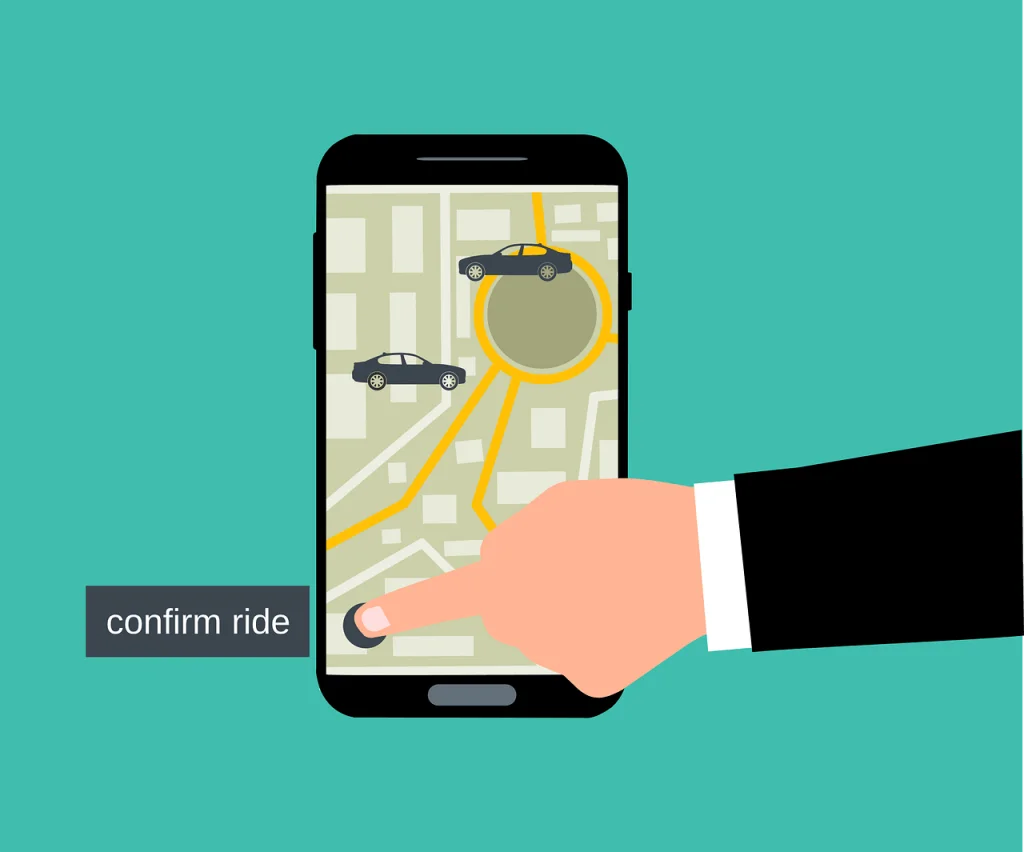
“Do you know? A bug is usually a cause of mild (or considerable) discomfort. Bugs can sometimes be so serious that we have to quit using a piece of software entirely. Read More: How to reduce bugs in software.”
It is necessary to learn the fundamental components of the entire system to create an app resembling an Uber taxi-hailing app or a comparable taxi-booking app. Also, developing a taxi app reservation system as an essential website – landing page is a brilliant idea. This would aid in the gathering of potential users as well as driving inquiries to join the network.
Sounds a little complicated? Let’s begin with the basics and go further into the Uber-like app.
Uber Passenger App Core Features
- Registration and profile editing
- Booking
- Tracking.
- Price calculator
- Payments
- Push Notifications
- Contact and feedback
- Personal Profile
Additional features
- Booking in advanced features
- Share costs
- Rent a scooter, order meals, and more
- Request the favorite driver
- Waitlist
Core features of the Uber driver app
- Registration and profile editing
- Bookings
- Push notifications
- Navigation
- Estimated costs and the earnings tab
- Messaging and calls
- Riders ranking
- Driver support
Additional features
- Music
- Reward points
“Software builders usually begin by sketching out what they would like the software to perform and how they plan to execute it. Read More: What is Software Building Process.”
Admin Panel for Taxi Booking Uber Clone App
The high-level set of functions within an admin platform for Uber-like service includes:
- Locations & Fares Management
- Booking Management
- Driver & User Management
- Vehicle Management
- Check Ratings & Reviews
- Review Driver’s Orders & Payoffs
- Notifications Management
- Promotions & Discounts Management
- System Content Management & FAQ
- Integration with Google Analytics
- Driver & User Support
Some APPs Like Uber Available in the USA
You’ve undoubtedly heard of Uber and Lyft, however, you may not have heard of Curb, Gett, or Wingz. These applications provide you with a variety of alternatives for hailing cabs, arranging a cab in your region, and scheduling trips. Here is the list of apps that almost act like Uber.
1. Lyft
2. Via
3. Curb
4. Wingz
5. Flywheel
6. Arro
7. Gett
A Step-by-Step Guide to Building an Uber-like (Ride-Hailing Services) Taxi App
Now let’s address the question “How to make an app like Uber?”. A complicated mobile app may require both client-side and server-side app development. An efficient central server is required to manage real-time user interactions. Many essential aspects of a mobile application include cost calculation and location, directions to your driver using Google Maps, commission deduction, and rating.
This service would be best served by a big geographically spread server, which would reduce response times and eliminate failures. Let’s begin with the following steps to build an app like Uber:
1) Find Your Specialty
Typically, you must identify cab rental app niches. A firm must understand a specialty that will aid in the development of a taxi reservation app.
2) Prepare supporting documentation
Create a detailed technical plan that outlines all of the app’s features, architecture, and technical specifications.
3) Begin developing
Projects should be divided into separate tasks. Begin with the most important. To discover errors, do unit testing.
4) Investigate and audit
Make the most of the knowledge regarding taxi applications and the changes you’ve been experimenting with.
5) Install Uber-like apps
After testing, it’s time to deliver your program to the live environment.
6) Uber Clone App Idea
With Uber Clone or an app like Uber, you may get business solutions for ground transportation businesses of all sizes. To give digital transportation services to fledgling entrepreneurs, we provide an app called Uber Clone. Uber’s user-friendly interface makes it simple to book rides.
We provide a white-label Uber-like application that is ready to use and can be quickly customized to meet your specific business needs. Launch an app like Uber and allow consumers to order taxis online. It offers cab-hiring software that is simple, safe, and dependable.
Read More About: Detailed Guide on Fractional CTO | All You Need to Know
Upgrades and Recommendations After Development
Even once work is complete, we’ll remain in touch to discuss potential developments. Get tips on how to keep your app updated on a regular basis.
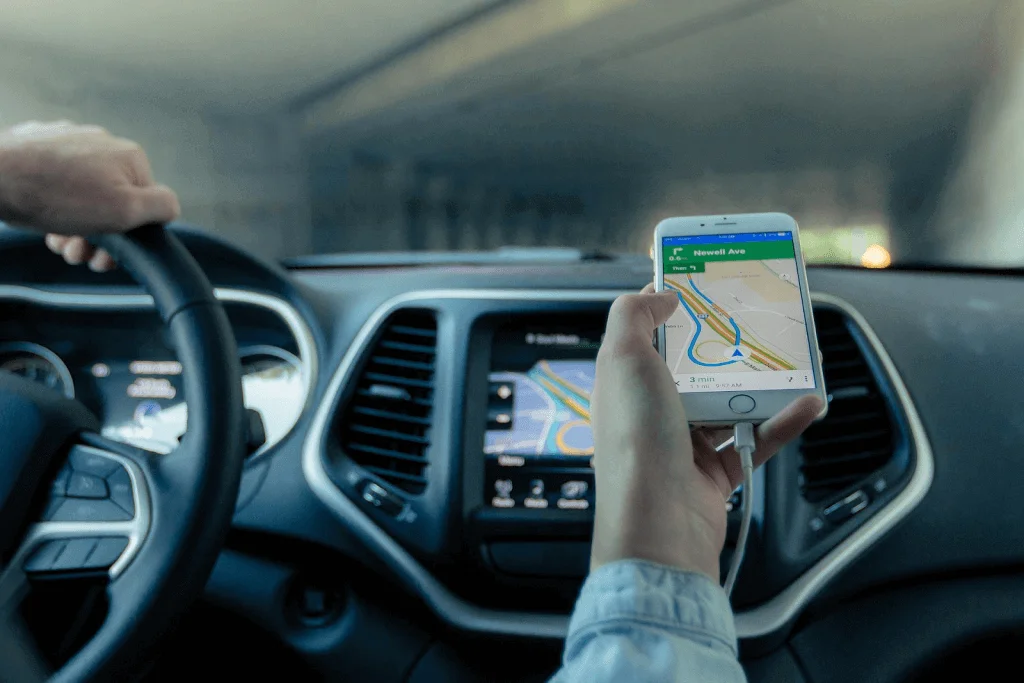
Research In Marketing Today
By studying the competitive environment and developing the most effective plan for your target audience, our company is able to stand out.
Marketing Assistance
You may now improve client happiness by incorporating digital assistance into our website’s marketing operations.
Secure, Bug-free, and Dependable Solution
Our skilled team is dedicated to providing secure app development with the integration of sophisticated technology.
Expert Consultancy
Building a solid foundation for your future business is crucial to your success.
More Rapid Deployment
Develop and quickly deploy an Uber-like app to help your taxi business expand quickly.
Predictive analytics
Maintain significant demand for AI technologies inside Uber-like applications
Do you know? An ultimate goal of SDLC 5 Phases is to make information systems or software development procedures greater in regularity, efficiency, and overall quality. Read More: SDLC 5 Phases and types of SDLC
For which Services or Business Uber-like apps are suitable?
An Uber-like app is suitable for services such as:
- Beauty industry (e.g., on-demand beauty services)
- Transportation services
- Healthcare services
- Delivery service for online retailers
- Local food & grocery delivery
- On-demand cleaning or home service
Aside from flawless technical execution, it’s critical to think about how to design an app the same as Uber user-friendly and appealing. This is when UX/UI Design enters the picture.
Cost Determining Factors For Uber like Apps
Cost-determining factors are also included in developing an Uber/OLA app. Aside from features, there are a few additional factors that impact the cost of developing an Uber app. Let’s investigate further.
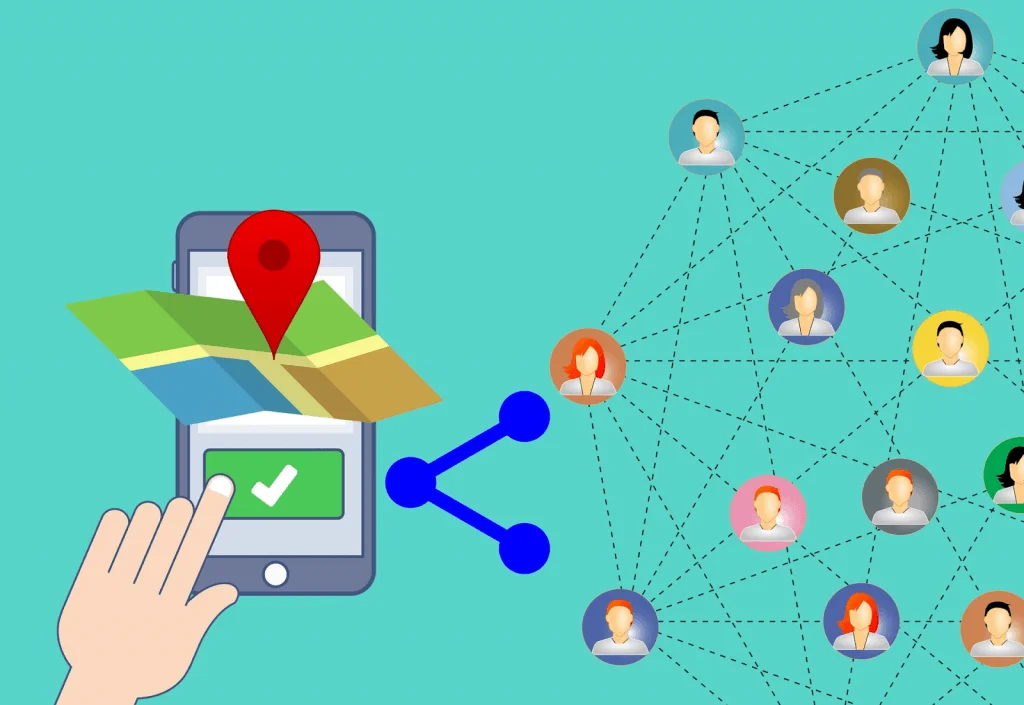
1. Business Type
The type of your company is a crucial factor to consider. Are you a new company? Do you want to work with any expert developers to build the app? Startups are more likely than established enterprises to have a restricted budget.
2. App Development Platform
- One of the most often requested questions before development is this. Do you want to create an Android, iOS, or both apps?
- Uber was the first iOS app to be published. At the time, iPhones were quite popular. iPhones accounted for almost 80% of the market (on the US market).
- You must plan ahead of time for your app platform. If you base your final selection on market research, it will be much easier.
3. The App’s Classification
The next significant technological choice must be taken. A native app would be less expensive to develop than a hybrid app. What sets them apart? Languages for programming, architecture, and a number of other factors
“UCD is an approach to digital product development and designing that puts actual users at the front of the product-creating procedure. Read More: What is UCD and its methodologies?”
Advantages of Uber/Ola Apps (Taxi App)
If you operate a dispatch cab company, you should think about how a taxi booking app might help you. Customers, passengers, and taxi firms all benefit from applications like Uber. Let’s go through each aspect and how the Uber-like app might be beneficial.
Customer Advantages:
1. Service is accessible around the clock:
You may download a cab app on your smartphone and utilize it at any time. If you need a cab late at night, you may reserve and obtain one. This is one of the most valuable benefits available to consumers.
2. Security
When you use an app to book a taxi, you will be provided the driver’s name, phone number, and picture identification. As a consequence, you won’t be concerned about security. In any event, if you feel endangered, you may use your driver’s information to file a police report, giving you greater security than if you took a cab without knowing the driver’s identity.
3. Payment Options That Are Flexible:
Numerous taxi booking applications are available on the market. Almost every payment method supported by the app is available, including cash, passport, wallet, net banking, and others. The user’s preferred payment method can be used to pay for the trip fare.
4. Affects Cost:
Every taxi app in a competitive industry provides fresh promos and incentives to draw more clients. You may have also realized that utilizing a cab app saves money and is an excellent substitute for public transit.
A NoSQL JSON directory can store and recover information utilizing the “no SQL” rule. Read More: What is the advantages of NoSQL.”
Benefits for the Taxi Industry
Let us know how you make money with your taxi app if you have one.
- Controlling all systems and seeing system reports can quickly provide you with a business concept for a viable approach.
- You track each Taxi using GPS to determine where your driver is.
- To expand the number of users in your region and boost your brand, hire additional drivers.
Uber’s Most Important Features
To create a user-friendly taxi app for both drivers and customers, Developers need to consider features and functionality for users. The software for some of the most critical features of the mobile app of Uber is shown here.
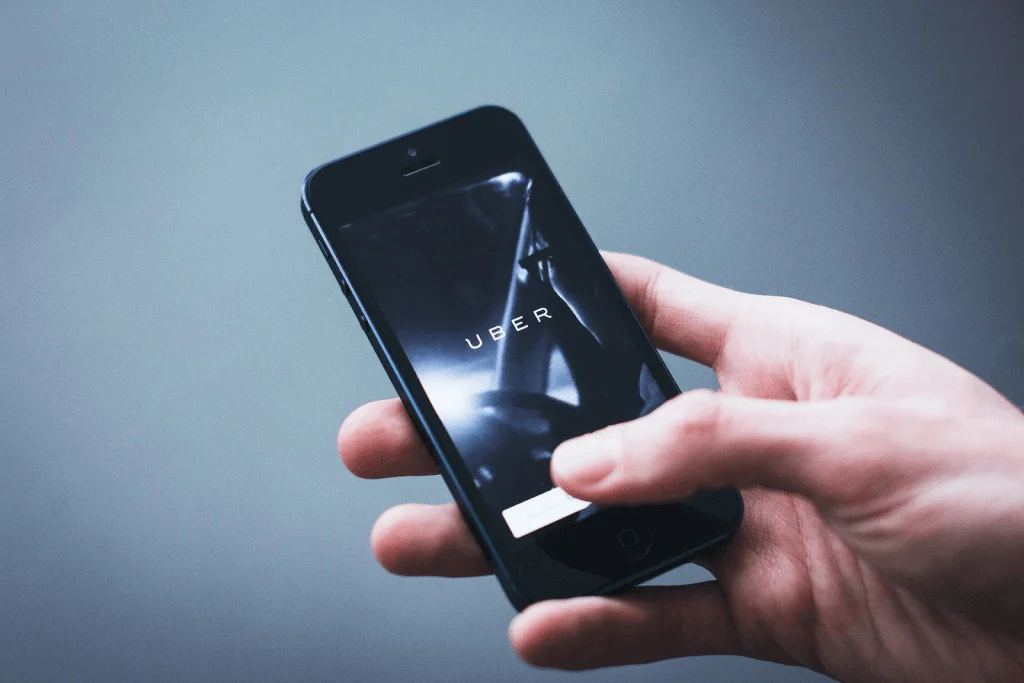
Technical Specifications on Many Significant Features
The following key aspects are critical to the smooth operation of Uber apps:
- Geolocation
- SMS and Push Notification
- Payment Integration Technologies
Let’s take a closer look at each one utilizing the technological stack!
1. Geographical location
Uber/OLA uses navigation and mapping technologies.
It uses the CoreLocation framework for iOS and Google’s location APIs for Android to determine the device’s position. When navigating from one spot to another, the drivers use MapKit for iOS users and Google Maps Android API for Android users to deliver instructions.
Uber has integrated Google Maps into their iOS and Android applications. It does not, however, rely only on Google Maps and, on occasion, prefers to buy mapping technology companies to tackle logistical problems.
“The main advantage of the relational database is that it consists of organised information or data that is typically stored in smart devices like computers. Read More: How are relational database helps in businesses today?”
2. Integration of Payments
To eliminate human mistakes, payment applications like Uber employ cards and wallets. When taking card/wallet payments, the organization must satisfy certain conditions. PCI specs are the name for it.
Payment Card Industry Data Security Standards are utilized in the United States to guarantee that payments and data are handled safely. Uber has partnered with Braintree to do this.
3. Push Notification and SMS
This advanced software is utilized to alert the passenger at several moments following the booking of the ride:
- The driver agrees to the request.
- The driver of Uber arrives at the designated pickup location.
- If your trip needs to be postponed,
- The passenger and the Uber driver will receive push notifications and SMS updates on the trip’s status.
- Uber uses the Twilio telecommunications provider to transmit SMS, Apple Push Notification Service, and Google Cloud Messaging (GCM) for iOS and Android, respectively.
Team To Develop Uber-Like Apps
Developing a taxi app without a production crew is challenging. You’ll need an all-around expert team with an effective all-around strategy plan to create the app properly. The following persons should be on your team:
- Swift for iOS app
- Amazon EC2
- Kotlin for Android app
- Amazon S3
- Node.js for back-end
- PayPal / Stripe
- Twilio
- Elastic email
- Google Places
- Socket.io
- Google Maps
- APNS
- Google Directions
- Firebase
- Card.io
- Facebook SDK
Now, Your development team must include:
- Business Analyst
- QA Engineer
- Project Manager
- UI/UX Designer
- Android / iOS Engineer
- Back-end developer
Recommendations for Taxi App Features from Experts
As a specialist app development company, we’ve created many Uber clone apps. Based on our experience, the following are the most popular features of Uber-like app alternatives.
- Outside-the-city reservations
In addition to Uber and Lyft, an out-of-station booking option is required. As a consequence, clients may use your taxi app regardless of their location. The “complicated scheduling” option, as well as a discount in the app for those who desire it, can be preserved.
- Car rental
As a result of the fast growth of car rental applications, self-driving taxis are in high demand by Uber app users. By including this choice in your app, you might, for example, target a different driving niche. Customers may access both taxis and hired cars by downloading a single app. It also helps them save space on their mobile devices, which are restricted.
- Bidding
Users should be allowed to establish their pricing using the taxi app’s bidding or “bargaining” feature. These qualities stimulate their attention even more. Their estimated trip expenditures are $30, but they may ask their driver for a $20 tip. It is totally up to the driver to accept or decline the route at the specified charge of the ride request. Personal preference with regard to gender
This feature ensures that both the user and the driver are at ease. Users who don’t like the gender of the driver assigned to them can choose another. A female passenger, for example, can request a female driver. As a result, unemployment might also be eradicated.
“Do you know? UX design is the technique of creating things that are helpful, simple to use, and enjoyable to interact with. Read More: How to Evaluate UX design?”
Is Uber taking a long time to develop?
Developing an app like Uber requires a lot of time and effort. When building an online cab booking software, there are several factors to consider. The difficulty of an on-demand taxi app varies based on the characteristics you want to imitate.
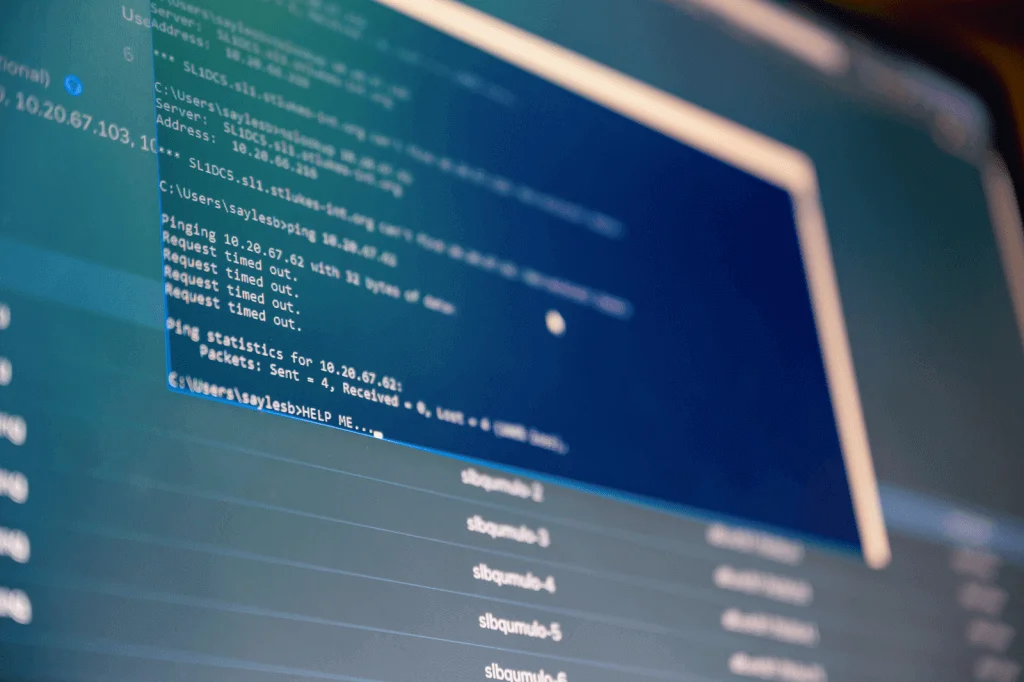
A skilled taxi app development agency can assist you with including innovative features, a user-friendly layout, and flawless navigation. It takes time to create well-designed software for your business; budget at least 8 weeks for the project.
Read More About: The Comprehensive Guide to Startup CTO
How Much Does It Cost to Create an Uber-style App?
Now that you’ve learned how to construct an Uber-like app and the basic and sophisticated features that must be included, it’s time to evaluate how much it costs to produce an Uber-like app. The cost of establishing the full app platform is complicated and depends on a number of things.
The following are some of the critical elements that influence the cost of developing a ride-hailing platform like Uber:
- The number and types of platforms you want to support passenger and driver applications (iOS, Android, Web).
- The number of features you’d want to include in both applications.
- Whether you need a finished product or simply an MVP, we can help.
- How welcoming do you want the user interface to be?
- The iterations must be accommodated after the first launch.
According to our experience shipping 19+ like uber white label taxi app solutions so far, the cost of developing an Uber-like app can range from $60,000 to $150,000, depending on the platform’s sophistication. You may also get started right away with a monthly membership.
Final Thoughts
One of the most significant outcomes of this growth is the creation of on-demand product companies. These firms aid you in accomplishing routine, day-to-day tasks or simply do it yourself for a nominal price. And, given the value they provide, most customers are willing to pay higher prices. This unique customer mindset has resulted in an increase in on-demand service suppliers with every coming day. Uber is perhaps the most incredibly popular, the ‘flag bearer.’
Uber and other so-called ride-hailing applications have reaped the most benefits from the new world movement of on-demand services. Their main selling point is how simple they are to use. Swoosh! Just press a button on the phone. You have a cab waiting for you just outside your door! With their capabilities already recognized and the unchangeable character of time limitations that bother individuals all around the globe, on-demand taxi services have a bright career ahead of them.
FAQs
What type of algorithm may Uber employ?
Uber employs algorithms relying on machine learning to find probably matched rides and allocate them to the exact vehicle. A sophisticated mechanism also determines who to choose and whom to drop first.
Uber uses what kind of software design or architecture?
Uber employs Riak, Cassandra, and Schemaless (developed in-house on top of MySQL). Schemaless is used to store long-term information. Riak and Cassandra provide good availability and minimal latency.
What AI tools and technologies does Uber employ?
To seamlessly attach restaurant menus to the Uber marketplace, our team combines advanced computer vision, Optical character recognition (OCR), automation, Machine Learning (ML), and Artificial Intelligence (AI) approaches.




